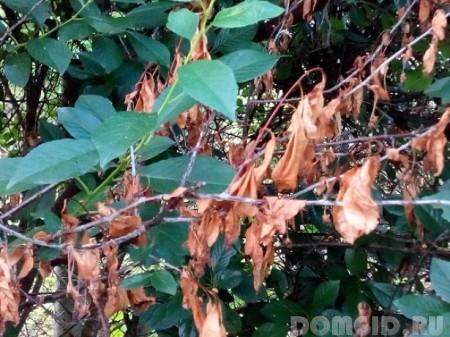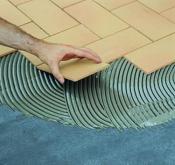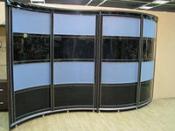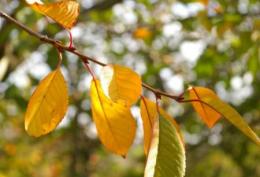Search
Login
Recommended
Cherry diseases, methods and methods of dealing with them
For many peoples inhabiting ancient Eurasia, cherry was a cult tree, personifying the house, clan, tribe. According to botanists, as a cultivated plant, cherries in our area began to land about five to five and a half thousand years ago. It should be noted that a special attitude to this tree has been preserved by the people today, it is difficult to find the owner of the land who, even on the smallest piece of land, would not find a place for planting cherries.
Content:
- The most common cherry diseases and their control video
- Why does cherry dry
- Cherry disease moniliosis, symptoms and treatment video
- Coccomycosis Cherry Disease video
- Cherry leaf disease
- Holey spotting
- Anthracnose
- Enhanced Gum Release
- Witch's broom
- Scab and rot
- How to treat cherries in the spring from diseases video
The most common cherry diseases and their control

Today, gardeners grow about 150 different varieties of cherries, unfortunately, to a greater or lesser extent, each of them is susceptible to specific diseases. Although the tree withstands harsh winters, drought, nutrient-poor soils, it cannot cope with diseases on its own. Owners of cherry trees should remember this and timely process the trees. You should carefully study what pests and garden diseases can threaten young and fruiting trees on your site.
Why does cherry dry
A tree can dry out for various reasons. Maybe it's just too deep set. Water entering during irrigation in this case can cause putrefactive processes in the horse neck. If the cherry began to dry for this reason - it will not be possible to save it, but it is not difficult to prevent this phenomenon - the tree should not be watered under the root, but in a furrow dug along the edges of the trunk circle.

Also, often drying out of the tree can occur when the bark beetle is affected. Visually determine the presence of bark beetle by round holes on the branches and the presence of gum. Heavily affected branches should be immediately cut down and burned, branches which are affected to a lesser extent can be saved.
A medical syringe should be filled with BI-58 and a small amount should be poured into each hole found on the branches. If the tree is young and healthy, then it is likely that it will survive and bear fruit. Trees heavily damaged by the pest will have to be removed.
Cherry disease moniliosis, symptoms and treatment
Often, with normal development at the beginning of the growing season and active flowering, the tree begins to dry right before our eyes. Single branches can dry, sometimes the whole tree disappears. This cherry disease is called a monilial burn, the cause of its occurrence is pathogenic fungi. The struck tree looks as if tongues of flame had actually passed through it. This is the first symptom of the disease.

Over time, it will be observed:
- the appearance of grayish growths on the cortex,
- decay and decay of the fruit,
- the appearance on the fruits of spots of gray rot,
- the appearance of cracks and gums on the branches of a tree,
- at the last stage, the branch dries.

Having noticed this phenomenon, the gardener should cut off all the affected parts of the branches, up to living tissues, collect leaves and fruits, destroy them. Next, you will need to treat the tree with one of the fungicides, a solution of Oleuprit, Kaptan, Kuprozan. The use of Bordeaux liquid or copper chloroxide should be discarded - they can cause burns to the leaves. In order to cure trees, fungicide treatment will need to be repeated several times.
Experienced gardeners recommend not to wait until the tree becomes sick, the best option is the preventive treatment of cherries in the spring from diseases. It is prevention that will allow us not to worry about trees during the season and get a full harvest from them.
Coccomycosis Cherry Disease
Almost all of the old varieties of cherries cultivated in Europe are susceptible to coccomycosis. The disease has a fungal origin, was first detected in Scandinavia. None of the old or modern varieties of the tree is not completely immune to the parasite fungus. Only cerapadus is not affected by coccomycosis, i.e. hybrid cherry with Japanese bird cherry and felt cherry.

The first symptoms appear on the leaves - brown dots appear, over time they turn into spots. The lower side of the sheets is covered with fragments of pinkish plaque - spores of the fungus. Leaf fall on an infected tree does not occur on time, the plant leaves for the winter unprepared. The death of a tree can occur in a few years, usually the plant does not survive the winter.
Naturally, the fungus affects the fruits, they change shape, become completely unsuitable for consumption.

From preventive measures, you can advise:
- since the parasitic mushroom hibernates on fallen leaves, then all the fallen leaves and twigs should be removed in the fall,
- be sure to burn all collected organic residues,
- digging ground under a tree is desirable in autumn and spring.
It is also recommended to carry out preventive spraying:
- bordeaux mixture (3%) - on blooming leaves,
- at the end of the flowering period - with the drug Topsin-m or a solution of chloroxide, you can use the agent Skor,
- third spraying time - at the end of the harvest, copper chloride or Bordeaux liquid is used.
How to deal with cherry diseases:
Cherry leaf disease
A symptom of yellowing of the leaves during the growing season may indicate that the soil in the garden contains too little nitrogen or boron. With a lack of nitrogen, yellowness is first observed on the leaves of the lower shoots, in addition, the leaves are smaller and crumble prematurely. A lack of boron leads to yellowing of the leaves on the tops of the shoots, their deformation, reddening of the veins on the leaves. It is not difficult to get rid of this problem, it will be enough to apply the appropriate complex fertilizers.
Yellowing of the leaves, and subsequently drying of the branches can be observed with the previously considered moniliosis. In the same way, the disease of cherries coccomycosis manifests itself, the cause that causes it becomes fungi, we talked about the methods of combating these diseases above.

Yellowing of the leaves can be observed if you water the tree incorrectly, or because the cherry did not tolerate winter frosts well. Ants can harm cherries, these garden pests should be carefully controlled, large anthills close to trees will cause constant trouble.

It is impossible to suppose that on the trunk of a cherry tinder fungi or honey mushrooms grow - mushrooms are likely to eventually cause the death of the plant.
Holey spotting
If the summer is too wet, you can observe the appearance of brown spots with a darker edging, which eventually turn into holes. Berries also become spotty, deformed and dry. From the cracking bark on the shoots, cherry glue begins to stand out.

The fungus that causes hole spotting hibernates on young branches or annual shoots.
To stop the disease you will need:
- be sure to delete all affected branches,
- carefully cover the cracks that appear on the bark with garden varieties,
- falling leaves are removed from the site and disposed of by burning.
Processing wood with chemical reagents is exactly the same as with moniliosis.
Anthracnose
Unlike all the above diseases, anthracnose does not affect the leaves, but the fruits of the plant. The first signs are the appearance of dull spots on the berries, then - a pinkish coating protruding from the tubercles. The berry itself, as it were, is mummified. If the summer is rainy, then almost the entire crop dies from anthracnose.

As a treatment, it is best to apply spraying with Polyram, it should be repeated three times:
- before flowering
- after flowering,
- and 15 days after the second spraying.
In this case, fruits with traces of defeat should be collected and destroyed.
Enhanced Gum Release
Damage to the plant by various diseases can lead to increased secretion of cherry glue. However, the cause may not be a disease, but an excess of moisture and nutrients in the soil. In any case, the appearance of gum is a symptom that should not be ignored, because there is a serious threat to the life of the tree.

To prevent gum spotting it is recommended:
- carry out systematic tree care,
- perform prophylactic treatment with copper sulfate,
- the tree trunk is recommended to be whitened - this will protect from sunburn and frostbite,
- emerging wounds on the cortex should be carefully cleaned and covered with garden varieties,
- damaged leaves and branches should be removed and burned immediately.
If the tree has a stunted appearance - make sure that the soil acidity is normal, the cherry grows poorly and does not bear fruit on acidic soil. Correct the situation by adding dolomite or lime flour to the soil.
Witch's broom
It should be noted right away that this name means two completely different in nature diseases. The growth, which has a phytoplasmic nature, has no treatment for this disease yet, the tree affected by it is doomed.

The second disease - has a fungal nature, characterized by a pale color of the leaves or their acquisition of a reddish hue. In addition, the size of the leaves is reduced, they become wrinkled.
The fight against the witch's broom is to remove the affected branches and treat the wood with a solution of iron or copper sulfate. If necessary, processing can be repeated after 15 days.
Scab and rot
Fruit rot is characterized by a rapid increase in rotting areas on the affected berry. Then - the appearance of white growths of rounded outlines. As a medicine, Zircon should be used.

Sometimes cherries can be affected by scab, its obvious signs are dark, with olive tint spots on the leaves, ripened fruits crack as a result of the lesion. As a preventive measure, nitrafen should be treated with the tree itself and the trunk circle.

Processing is done before the buds open. Treatment of a tree infected with scab will require three or four times processing it with a 1% solution of Bordeaux fluid or another fungicide. The tree should be sprayed the first time during the period of leaf opening, then after 3 weeks, then after harvesting, if necessary again, after 15 days.
How to treat cherries in the spring from diseases

Now you should consider the option of planned preventive treatment of cherry trees:
- After trimming the tree, the wounds are closed with garden varieties, the tree itself is treated with copper sulfate.
- The trunk of the tree is lime.
- A solution of 10 liters of water and 0.7 kg of urea is prepared, the tree itself and the trunk circle are treated, this will destroy fungi and infections that can cause diseases and supply the tree with enough nitrogen for normal development.
- If the treatment time has been missed and the kidneys are already swollen - treatment with urea is not recommended - burns may result. For spraying, you can use solutions of nitrafen, phytoverm, acarin, agravertine, and other similar drugs.
- To give the tree a higher resistance to disease, it is recommended to treat it with ecoberin or zircon.

Do not forget about the need to remove all diseased and suspicious branches, treat the cut site with copper sulfate and garden var. Follow the recommendations for care and in the middle of summer cherry trees will delight you with a rich harvest.

A few more tips for cherry care, we hope that they will be useful:





